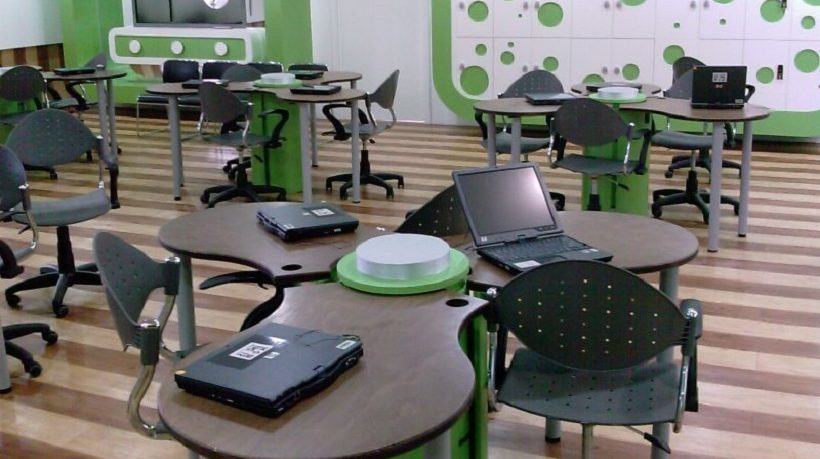The Differences Between eLearning And Traditional Classroom Training
Our current pace of technological advancement has turned the concept of modern learning on its head. Before, eLearning was considered a niche, futuristic, and complicated way to address learning. However, now it’s increasingly becoming the go-to method for teaching in classrooms as well as in the workplace. The problem arises when eLearning courses and methods are thought of as simply “virtual versions” of classrooms. Traditional and eLearning pedagogies, while comparable, aren’t necessarily directly compatible, and designing an eLearning course and curriculum to directly mirror the instructor-led training approach is a recipe for disaster. eLearning, while sharing plenty of similarities with “analogue” learning, also exhibits many unique qualities that learners and instructors must navigate in kind in order to be successful. Let us have a look at the differences between eLearning and traditional classroom training.
Virtual Location And Interactions
One of the most obvious differences between eLearning and traditional classroom training is the physical location of a real-world classroom versus the virtual forum format. The effects of this disparity are many. With eLearning, students can engage with online classrooms anywhere, meaning that scholars, employees, and trainees alike can learn on their own terms. Since varying learning types are accommodated in this, as well as the ability to use mobile devices to recall information from modules at any time, skill acquisition and retention flourish under the eLearning approach. Virtual format can also lend to gamified learning.
The downside is that employees and students who aren’t “self-starters” or are more kinesthetic learners may suffer from a lack of set location and time. Nevertheless, strict deadlines and even physical study and work groups can help achieve the illusion of physical space in a virtual world.
Another big difference between traditional learning and eLearning comes in the form of communication and interaction. Traditional classroom methods generally benefit from student-instructor proximity, especially when the lesson features hands-on instruction. However, eLearning can still foster healthy communication and pertinent interactions through forums, discussion boards, chat, video calls and other types of unified communications--with the added benefit that they’re all recorded as text and video, and easy to recall later.
Learning Material And Medium
Instructional material in a traditional classroom can come in various forms, such as PowerPoints accompanied by a lecturer, or textbooks--usually also accompanied by a lecturer. In contrast, eLearning doesn’t rely on a teacher to instruct from the front of a classroom. Instead, many of the learners will be reading from screens, meaning that they’ll be skimming for information and paying more attention to larger headlines, bolded text, and shorter paragraphs.
eLearning courses will use a greater range of media than just text, however. Visual media such as simulations, storytelling and scenarios are all part of the eLearning wheelhouse. According to Karla Gutierrez writing for Shift eLearning, these are the visual elements you should be considering when creating a well-rounded eLearning course:
- Font.
As mentioned above, font size, bolded and italicized text, and even different lettering styles will all lend to the visual flow of a piece. - Color.
Using different color patterns to highlight specific information or draw attention to certain sections of the screen. - Graphics.
Icons, symbols, photos, and illustrations are going to be essential to keeping visual attention--and moving graphics can even be a step up. Moving graphics need to be done well so that they aren’t too cartoon-y or cheesy. - Order/Sequence.
Much like the flow of a PowerPoint presentation, you shouldn’t “break up text in an awkward way with a photo” or a video--make sure that your module and lessons are cohesive.
Lastly, don’t over-do it with the visuals--too much can be distracting.
Formative Assessment, Feedback, And The 3 Questions
Art Anderson, an instructor at the college of education at Concordia, suggests that, regardless of the type of teaching, “we have two critical elements at our disposal to help others learn. Formative assessments and feedback”.
Anderson explains that formative assessment and feedback both assist in the answering of three essential questions for teacher and student alike, no matter whether it’s eLearning or traditional learning.
- Where am I going?
The point of any lesson or module should be fully understood. Both instructor and learners alike need to know the expected outcome of the lesson as well as what skills or training should be acquired by completion. - How am I doing?
No lesson is perfect, and the teacher/instructor should be using data from formative assessments to analyze and adjust lessons. Anderson asks: “Does the student receive feedback as well as the formative data in an atmosphere that invites errors without penalty, invites improvement and growth without penalty?” - What’s next?
Instructor and student/trainee should both always have an understanding of what the future holds and what the next steps should be based on the formative assessment data and feedback.
While technological differences between eLearning and traditional classroom training must be taken into account, there will always be certain fundamentals that stay the same.These differences are defined by strengths and weaknesses both, but by fine tweaking the course to your liking, you’ll find that the flexible aspect of eLearning courses mixed with formative assessments and feedback make for a dynamic learning tool suitable for most learners.

